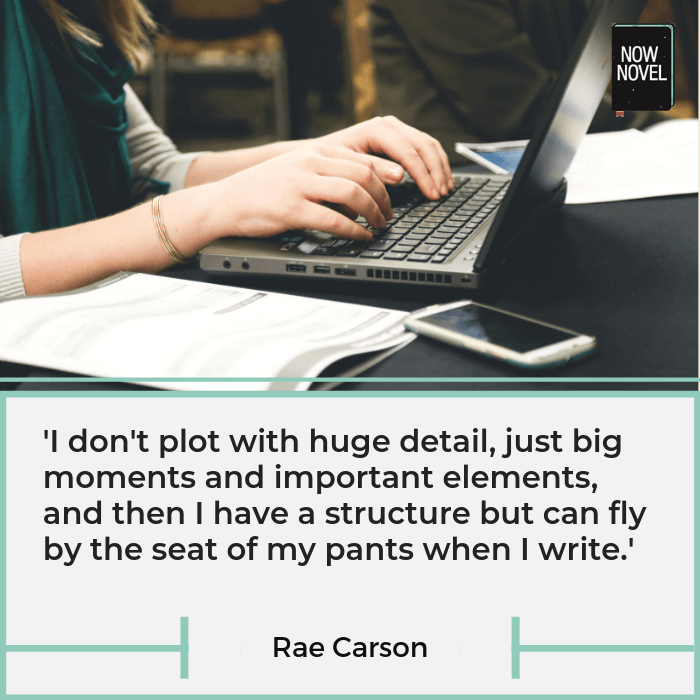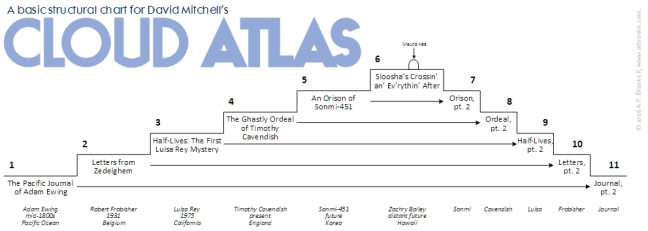Concrete plot structure examples teach us how to structure a story with purpose. Read illustrative examples of well-known stories' plot structure, from children's stories to famous epics and novels:
First: What is 'plot structure'?
'Plot structure' refers to the patterns the events of a story form. Some cite Aristotle as one of the first writers to codify story structure. He wrote in his Poetics (though in specific reference to tragedy) that every story should have a beginning, middle and end - our most basic ideas of structure.
In addition to beginnings, middles and ends, stories have repetition and development. The same way musical themes and melodies return in sonata form (a type of structure common in classical music), sometimes the same and sometimes altered.
This is 'plot structure' at its most rudimentary or basic. It applies to novels and short stories alike. Here are plot structure examples that give us more concrete insights:
1. Using repetition and variation: 'The Three Little Pigs'
Repetition is a fundamental building block of story structure. We find it across the spectrum of storytelling, from religious texts to children's fables and mythologies (from the Three Wise Men to the Three Little Pigs).
In Brideshead Revisited by Evelyn Waugh (1945), the first part of the story shows the protagonist Charles Ryder visiting the stately Brideshead Castle in Wiltshire, after he befriends a man at college whose family owns the estate. At the end of the novel Ryder visits the manor again, but it is now crumbling and damaged after the war.
The story's middle developments and complex character relationships are thus book-ended by visits to Brideshead. The mirrored event shows (to poignant effect) how time and conflict reshape our world and ourselves. Repetition with variation helps to underscore the contrast between pre-war grandeur and post-war decay.
To return to a simpler, well-known plot structure example showing the power of repetition, let's discuss the children's story 'The Three Little Pigs'. It shows the creative power of repetition to create expectation, suspense and surprise:

Structured suspense: Repetition and expectation in 'The Three Little Pigs'
In the story, three little pigs' mothers send them out into the world to seek their fortune. One builds a house of straw, one a house of sticks, and the third a house of bricks.
A wolf, the villain, wants to eat the pigs. He blows down the straw house first and devours the first pig. He blows down the stick house second and devours the second pig. But the sturdiest brick house stands and the third pig outwits the wolf. He tricks him into coming down the chimney and catches him in a cauldron.
The simple three-part structure of the story varies the setting each time. Each time, it's a different pig's house, made of different materials. This small change, the varied element of the repetition, keeps us guessing how events will pan out.
The wolf winning the first two times also creates the expectation that he will keep triumphing. It places additional pressure on the third encounter - the stakes are higher because it's the last pig. We see how a simple repetition, the 'bad guy' winning multiple times in a row, amplifies suspense.
[Plan the events of your story in the Core Plot and Scene Builder sections of our easy step-by-step outlining tool.]
2. Delay resolution via secondary episodes: Structure in Homer's The Odyssey
Homer's Iliad and Odyssey are epic Ancient Greek poems that tell the story of the Trojan War.
To greatly simplify the plot structure of The Odyssey, while Odysseus is away on the battlefield, suitors to his wife Penelope, presuming him dead, lay siege to his homestead. They badger Penelope to remarry one of them. This subplot makes Odysseus's return home more urgent. His 20-year-old son, Telemachus, sets out seeking news of his father.
There are many episodes and incidents along the way that delay Odysseus' eventual return. These subplots extend the story's structure, turning what could have been a simply journey homewards into a perilous, suspenseful quest. By the time Odysseus returns, he has aged and is barely recognizable.

As the plot structure infographic above shows, episodic subplots involving various secondary characters, from Gods to enchantresses, help to delay a key event that will resolve Penelope's dilemma - Odysseus's return. These episodic 'interruptions' to that core character arc thus sustain suspense.
3. Get creative with plot structure: David Mitchell's Cloud Atlas
There's no reason why your story's plot structure has to be either simple or episodic in a linear way, of course.
David Mitchell's genre-bending novel Cloud Atlas (2004) uses a complex circular mirror structure.
Each section's plot-line is left partially unresolved until a middle section, after which the prior plot-lines are resolved in reverse order.
This way, we begin and end with the same character, a Pacific adventurer named Adam Ewing, with his story given as journal entries.
Blogger Al Brooke created this illustrative diagram of the plot structure in Cloud Atlas. The arrows from each section's name show which later chapters resolve which earlier plot-lines:

Mitchell's creative story structure is a stroke of brilliance for several reasons:
- Each storyline, from the journals of Adam Ewing to the investigative thriller 'Half-Lives: The First Luisa Rey Mystery' has a delayed resolution that leaves us in sustained, intriguing suspense
- The story develops towards a central section that reads as both post-apocalyptic and pre-civilization ('Sloosha's Crossin' an' Ev'rythin' After'). The structure thus creates a sense of circular time. It mimics the circular patterns of rise and fall, development and destruction, that make up the history of civilizations and nations
4. Shift time and perspective: Virginia Woolf's To the Lighthouse
The modernist author Virginia Woolf's subtle meditation on family and loss has an interesting, three-part structure with a surprising shift of perspective and time-frame in the middle.
In Part 1, 'The Window', we see the Ramsay family at their vacation home in the Hebrides, on the Isle of Skye. There's a lot of fuss about whether or not they will visit a lighthouse. With nimble use of third-person POV, Woolf shifts between Ramsay family members' and their friends' viewpoints.
In the middle section, 'Time Passes', Woolf changes to an omniscient viewpoint. The section spans the beginning and end of the First World War. The reader learns about various deaths in the family, including Mrs Ramsay's. Sometimes the viewpoint becomes Mrs McNab's, the family's housekeeper.
The change in viewpoint and speeding up of time, and the focus on death, creates a sense of loss and absence in the middle section. Woolf captures the losses and absences of war through the symbol of the empty house.
In the final section, we see the surviving Mr Ramsay and the children finally make their trip to the lighthouse.
Insights from Woolf's use of structure and narrative time
Woolf's playing with time's passage in different sections of her novel (accelerating time for 'Time Passes') creates a sense of multiple scales of time. History unfolds alongside the personal time that emerges in the minute, everyday details of the family scenes.We see the backdrop of larger events that frame a human life.
This structure helps Woolf to achieve a poignant effect, as we learn about small, personal moments and sense their relative insignificance and ephemeral, transient nature compared to towering historical events.
You can thus use structure in your story to divide up not only events but time periods and even time passing at different rates.
Get help structuring your story and work with a writing coach. Or plan your next story, step-by-step, in the Now Novel story dashboard.











Excellent blog post! It’s information like this that help beginner writers excel in their craft. It introduces some very helpful suggestions to get one started on the right track. Thank you for sharing.
Derrick - Over 6 years ago
Stumbled on this novel website and it's terrific!
Elbow Jumper - About 6 years ago
Thank you, Elbow_Jumper! We're glad to help.
Jordan At Now Novel - About 6 years ago
This is very informative for writers wanting to adapt stories to create their own slant.
Sage Corner - About 5 years ago
Thank you for reading and for sharing that, Sage. Good luck with your story!
Jordan - About 5 years ago
Nice post, but wolf didn't eat the pigs - they fled to the next stronger house.
Marilyn Kelly - Over 4 years ago
Hi Marilyn, thank you for reading our blog and for your feedback. In the earliest version from 1853 the wolf does in fact eat the first unsuccessful pigs; I imagine the fable was sanitized for younger readers in later versions but earlier fables and fairy tales could be quite grim (no pun intended).
Jordan - Over 4 years ago
hi
Jeremyah Peterson - About 4 years ago